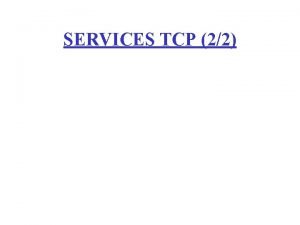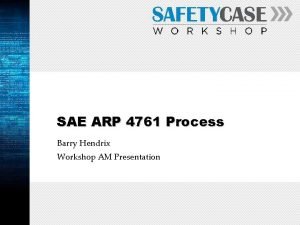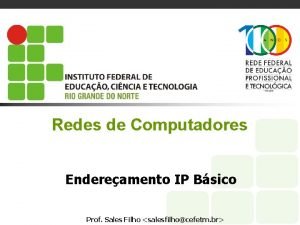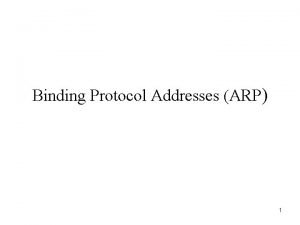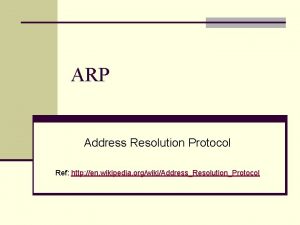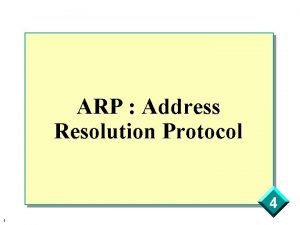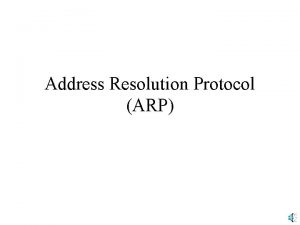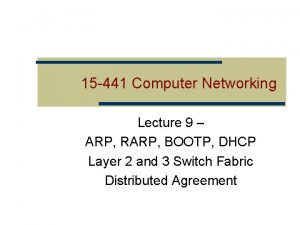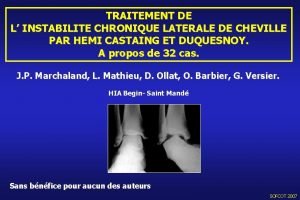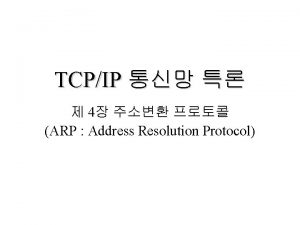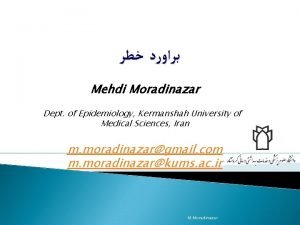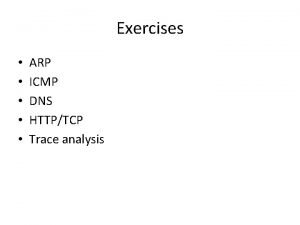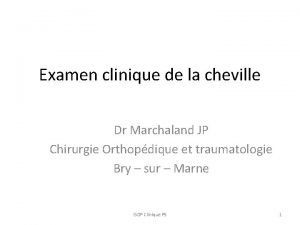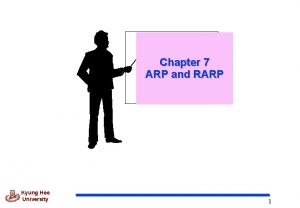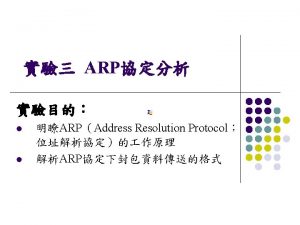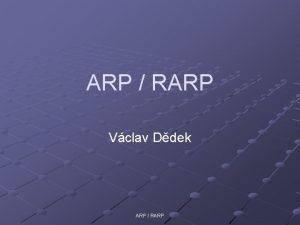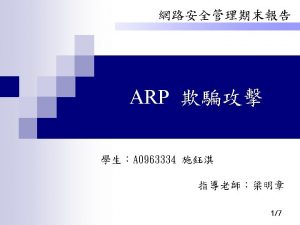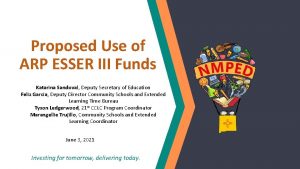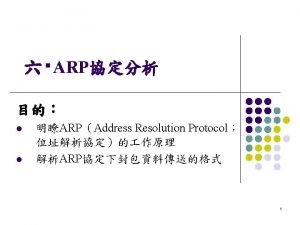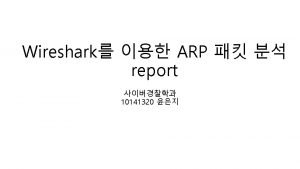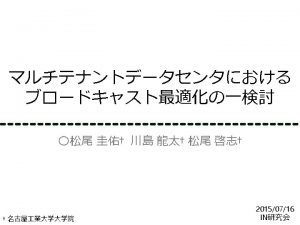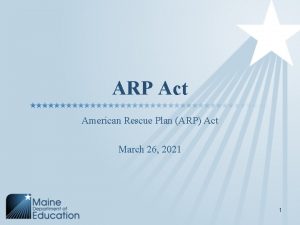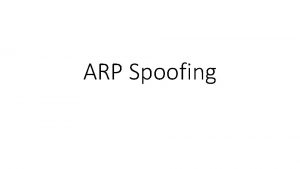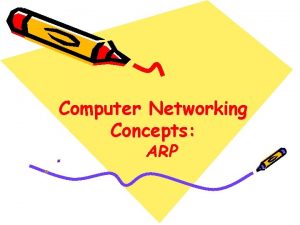Oregons ARP ESSER ESSER III Application State and
























- Slides: 24

Oregon’s ARP ESSER (ESSER III) Application State and District Overview Wednesday, June 9, 2021

Before We Begin 1. The purpose of this presentation is to provide a view into our state’s 2. 3. 4. 5. application for ARP ESSER (ESSER III) funding to support the education of Oregon students. Our state application is aligned with efforts already underway, both at the local and state level. The application has been submitted but is not yet approved. ODE will inform school leaders if and when it is approved. This is just the starting point. Expect changes and evolution as this process doesn’t end until 2024. ESSER III under ARPA will come with additional requirements, processes, and data requests for the state and for school districts.

Agenda • About ARP and ESSER III • Timeline for State and Districts • State Application Priorities • ODE’s Role and Approach • Equity-Centered Investment Framework • Continuous Community Engagement • Application Highlights • Detailed Funding Breakdown • Guidance & Resources • Q&A

American Rescue Plan (ARP) Elementary and Secondary School Emergency Relief (ESSER III) Fund On March 11, 2021, President Biden signed the American Rescue Plan (ARP) Act of 2021. The ARP Act includes nearly $122 billion for the Elementary and Secondary School Emergency Relief (ESSER III) Fund. Oregon Department of Education was allocated $1. 121 billion

Timeline ● March 11, 2021 - American Rescue Plan (ARP) Act was signed into law ● April 21, 2021 - ESSER III Application Letter to Chief State School Officers ● April 30, 2021 - ODE communicates district allocations and Oregon Invests & Envisions Equity in Education Framework to guide district and state investments under the ARP ESSER allowable uses ● May 24, 2021 - ODE made LEA allocations of ESSER III available to districts ● June 7, 2021 - ESSER III State Application Submitted ● Unknown: USDOE Approval ● June 18, 2021 - ODE will announce district timeline and deliverables ● August 22, 2021 - District ESSER III Funding Plans and Self-Certification Form to assure LEA’s plans for Safe Return to In-person Instruction and Continuity of Services due to ODE ● Ongoing: State and Local engagement with community ● September 30, 2023 - Last date to obligate ESSER III funds ● September 30, 2024 - Last date to expend ESSER III funds

ODE’s Role and Approach ODE will provide a FRAMEWORK AND VISION to increase alignment and collective action on areas of focus in order to increase the potency of engagement. COMMUNITY ENGAGEMENT has been and will be an anchor for ODE’s planning and guiding our decisions, especially for areas where we need more clarity on investment strategies. State-Level Investments/Programs (State Set-Aside 10%) will be shaped by input received through an ongoing engagement process. ODE will ensure that CLEAR INFORMATION AND GUIDANCE are provided both to districts and communities. Districts will hear what ODE is hearing in order to guide investment. Districts will also be encouraged to report back to communities what they heard and how input is being incorporating into plans. ODE will INFLUENCE, SUPPORT, AND MONITOR district-level strategies and leverage SIA community engagement. Direct support for districts will be established through increased staff and evidence-based strategies.

Oregon Invests & Envisions Equity in Education Prioritize Health & Safety For All Communities During the pandemic, health and safety protocols were instituted that must remain a top priority to prevent and respond to any further public health crises. Facility and public health protocols as well as targeted professional learning must continue in a purposeful way. We must recommit to creating schools that are welcoming to each and every student we serve. Vigilance against hate and violence keeps our schools safe. Help students prepare for next steps after high school by ensuring they are completing financial aid forms, have access to higher education application and enrollment processes, and workforce preparation. Learn from Comprehensive Distance Learning in 2020 -21. Improve upon and apply best practices to online programs offered in 2021 -22 and beyond. Extend the learning day and year. Provide before and after school enrichment and learning activities. Collaborate with tribes and community based organizations (especially culturally specific organizations). Refine Digital Learning Make Unfinished Learning a Priority Students who are transitioning from one community to another or to a new school (kindergarten, 6 th, & 9 th grades) need to feel support and belonging to overcome fear and isolation. Prepare for Next Steps After High School Create Equitable Access to Education Centering Equity Every student benefits when we center equity for students of color, experiencing disability, tribal members, emerging multilingual, navigating poverty, houselessness, foster care, and non-dominant gender identity and sexual orientation. Serve Students in Transition Safeguard Student Opportunity Implement programs to enroll all students and regularly engage families, especially those who have not had access or have not been attending. Provide Mental, & Social, Emotional Health Support students and staff with culturally responsive traumainformed care, social emotional learning (SEL), racial equity and anti-racist approaches, and a strengths- focused multi-tiered system of support. Create Access To Well. Rounded Education Center student learning that builds on strengths, addresses needs, provides active engagement, and is culturally responsive and developmentally appropriate. The disproportionate and severe impact of the pandemic and our response on students and families must be recognized, we must afford every student a full academic learning experience without restriction as they regain their learning stride.

ESSER III Framing Priorities Throughout the last year of navigating the pandemic, feedback from schools, districts, and communities highlighted several key issues facing students and schools across Oregon. The three issues listed below surfaced as priorities: 1. Addressing unfinished learning through asset-based acceleration strategies 2. Prioritizing health, safety, wellness, and connections for all communities 3. Strengthening high-quality, culturally-sustaining and revitalizing instruction, leadership, and pathways to graduation and post-secondary transitions.

Application Section Highlights A. Describing the State’s Current Status and Needs We name our high level state priorities. Overall strong alignment between ARP ESSER requirements and existing ODE priorities, foci, and investments. B. Safely Reopening Schools and Sustaining Safe Operations The RSSL operational blueprints meet the 30 -day requirement for LEA plans for Safe Return to In-Person Instruction and Continuity of Services. ODE will use a self-certification method for ESSER plan review and revision requirements. C. Planning for the Use and Coordination of ARP ESSER Funds The past 15 months of engagements are directly informing our application along with four additional feedback sessions. ODE has been and will continue to coordinate COVID-19 related and other federal funding. D. Maximizing State-Level Funds to Support Students We have a frame to guide our investments based on our priorities, research-based practices, and identified student needs and opportunities. Additional planning and community engagement are needed to inform specific investment commitments. E. Supporting LEAs in Planning for and Meeting Students’ Needs We are asserting that most of the planning and reporting requirements for districts will be met through the SIA process. We will need to supplement the SIA process in key areas. F. Supporting the Educator Workforce The EAC work underway aligns to this section’s focus on stabilizing, diversifying, and developing the educator workforce. ODE will need to work with partner agencies, education service districts, and other educational entities to better understand educator shortages and address potential gaps. G. Monitoring and Measuring Progress ODE will continue to use reporting mechanisms in place for ESSER I and ESSER II until USED provides more clarification on ESSER III requirements. There may be additional reporting requirements.

Application Highlights B. Safely Reopening Schools and Sustaining Safe Operations ● ● The RSSL operational blueprints meet the 30 -day requirement for LEA plans for Safe Return to In-Person Instruction and Continuity of Services. ODE will use a self-certification method for ESSER plan review and revision requirements. Current operational blueprint meets the 30 -day requirement for a Safe Return to In-Person Instruction and Continuity of Services plan Streamlining or replacing the “Operational Blueprint for Reentry” design to meet federal and any state requirements. Shifts include: ○ A certification-only process that covers key aspects of CDC and state health and safety guidance ○ Review of operational plans will be required semi-annually (every 6 months) ○ Certifications will be at the district (not school) level, except for charter schools ○ Private schools are not addressed in this system First certification to be required August 22 ODE will continue many of the current RSSL supports next school year such as Office Hours and streamlined RSSL guidance

Application Highlights E. Supporting LEAs in Planning for and Meeting Students’ Needs ● ● We are asserting that most of the planning and reporting requirements for districts will be met through the SIA process. We will need to supplement the SIA process in key areas. Key areas of supplemental information needed include: ○ How LEAs have engaged with: ■ Migratory Students ■ Children who are incarcerated ○ LEAs will be asked for supplemental information about: ■ How LEAs meeting the mental and behavioral health of all students ■ Disportionate impact from Covid-19 ○ Supplemental information need for ESSER III will be posted alongside SIA information ○ Supplemental information to meet requirements would be reviewed by ODE Reminder: the ODE proposed plan is subject to approval from USED

Community Engagement Summary Key Themes 1. Family Engagement: Realize family and community engagement strategies in each area and hold districts accountable to their plans. 2. Centering Equity: Don’t let equity get lost in the shuffle within each priority area. 3. Disparate Impact: Students in special education, in foster care, from highly mobile populations, who are BIPOC, from areas with low vaccination rates, and others were affected differently and may need different solutions in each area. 4. Grade Level Transition: Assessments can be a part of ensuring students are acknowledged for their achieved mastery, acknowledging students may not need to only be learning in one grade level across subjects. 5. Sustainability: The one-time nature of these funds is of concern when it comes to sustaining efforts in each area, as well as ODE’s ability to support the continuity.

ESSER III Funding Breakdown $1, 121, 028, 734 to the Oregon Department of Education 90% to Districts using Title I formula $1, 008, 925, 861 10% for State set aside $112, 102, 873

90% to Districts $1, 008, 925, 861 allocated to school districts Plus $1, 620, 000 of State set-aside to the 18 districts not funded through Title I formula Create a $90, 000 minimum allocation for districts $1, 010, 545, 861 total direct allocation to districts

90% to Districts School district grants are allocated in the same manner as ESSER I and II; however, USED requires through both the ARP Act and Interim Final Rule that each school district have an approved use of funds plan, guided by meaningful public engagement, that outlines the following: ● ● ● How funds will be used for strategies that effectively mitigate the risks in reopening schools ; How no less than 20% of a districts total ESSER III formula grant be used to address unfinished learning through the implementation of evidence-based interventions, such as summer learning or summer enrichment, extended day, comprehensive after school programs, or extended school year programs; and How remaining funds will be used in accordance to the eligible use of funds as outlined in the ARP Act which remain consistent with the eligible uses under ESSER I and II. District plans must also ensure that all interventions, including those required from the 20% allocation, respond to students’ academic, social, and emotional needs and address the disproportionate impact of the coronavirus on students from racial or ethnic groups that have historically experienced disparities, students experiencing poverty, students with disabilities, emerging bilingual students, migratory students, students experiencing homlessness, and children and youth in foster care.

10% for State Set-Aside Proposed Allocation 10% State Set Aside School District Formula Grant $1, 620, 000 State Sponsored Charter Schools $2, 459, 148 Oregon School for the Deaf $753, 750 State Administration (0. 5%) $5, 605, 144 Total Proposed Allocation $10, 438, 042 Unallocated – Addressing Unfinished Learning (5%) $56, 051, 437 Unallocated – Summer Enrichment (1%) $11, 210, 287 Unallocated – After School Programs (1%) $11, 210, 287 Unallocated - General (Remaining) $23, 192, 820 Total ESSER III State Set Aside $112, 102, 873 The Department plans to use: ● $1, 620, 000 of the general resources in the state set-aside to ensure a minimum funding level of $90, 000 for the 18 school districts that will receive less than $90, 000 using the Title I formula ● $2, 459, 148 for Oregon’s 4 State sponsored public charter schools ● $753, 750 to the Oregon School for the Deaf ● 0. 5% for state administration.

10% for State Set-Aside Proposed Allocation 10% State Set Aside School District Formula Grant $1, 620, 000 State Sponsored Charter Schools $2, 459, 148 Oregon School for the Deaf $753, 750 State Administration (0. 5%) $5, 605, 144 Total Proposed Allocation $10, 438, 042 Unallocated – Addressing Unfinished Learning (5%) $56, 051, 437 Unallocated – Summer Enrichment (1%) $11, 210, 287 Unallocated – After School Programs (1%) $11, 210, 287 Unallocated - General (2%) $23, 192, 820 Total ESSER III State Set Aside $112, 102, 873 At least 7% of total, to be allocated from the 10% state set aside, must be allocated for three specific activities and interventions that respond to students’ academic, social, and emotional needs and address the disproportionate impact of COVID-19 on underrepresented student groups, including racial and ethnic groups; students experiencing poverty; students experiencing disabilities, emergent bilingual students; transgender, gender diverse, gender nonconforming and/or gender expansive students; migratory students, students experiencing houselessness; and children and youth in foster care.

10% for State Set-Aside Proposed Allocation 10% State Set Aside School District Formula Grant $1, 620, 000 State Sponsored Charter Schools $2, 459, 148 Oregon School for the Deaf $753, 750 State Administration (0. 5%) $5, 605, 144 Total Proposed Allocation $10, 438, 042 Unallocated – Addressing Unfinished Learning (5%) $56, 051, 437 Unallocated – Summer Enrichment (1%) $11, 210, 287 Unallocated – After School Programs (1%) $11, 210, 287 Unallocated - General (2%) $23, 192, 820 Total ESSER III State Set Aside $112, 102, 873 The remaining $23, 192, 820 will be used according to Oregon’s state plan, guided by school and community engagement.

Elementary and Secondary School Emergency Relief (ESSER III) Proposed Allocation School District Formula Grant 90% Requirement 10% State Set Aside Total $1, 008, 925, 861 $1, 620, 000 $1, 010, 545, 861 State Sponsored Charter Schools - $2, 459, 148 Oregon School for the Deaf - $753, 750 State Administration - $5, 605, 144 $1, 008, 925, 861 $10, 438, 042 $1, 019, 363, 903 Unallocated – Addressing Unfinished Learning (5%) - $56, 051, 437 Unallocated – Summer Enrichment (1%) - $11, 210, 287 Unallocated – After School Programs (1%) - $11, 210, 287 Unallocated - General (2%) - $23, 192, 820 $112, 102, 873 $1, 121, 028, 734 Total Proposed Allocation Total ESSER Allocation $1, 008, 925, 861

Resources & Guidance • ESSER-III-State-Plan web page • State application • April 30, 2021 School District allocations • Timelines • District templates • District resources

Resources & Guidance • Ready Schools, Safe Learners and companion guidance documents • MAC Guidance for the COVID-19 Pandemic’s Impact on Oregon’s Latino/a/x and Indigenous Communities • Student Learning: Unfinished, Not Lost • Mental Health Toolkit • Summer Learning Best Practice Guide • Key Takeaways from Oregon Teachers’ Experience During the COVID-19 Pandemic • Developing the Online Learning Playbook

Student Learning: Unfinished, Not Lost This resource and guidance document reflects the input received from our engagement with you and incorporates an asset-based approach for schools and districts in the coming months and years. The guidance also summarizes ten components from the Framework for Restarting and Reinventing School. The Department has incorporated these themes along with your input to shape the State’s ARP Act ESSER III Application:

Making Community Engagement Central The resilience and strength of communities and schools is something to notice and cheer on. And the opportunities to deepen partnerships while addressing the challenges brought on by systemic racism, poverty, COVID-19, wildfires, loss of power, and the hundreds of ways we struggle to respond to the wholeness of students, families, educators, and school leaders are clear, complex and daunting. This revised community engagement resource is being offered at this critical time as districts and schools continue to engage with students, families, and communities in new ways and to support ongoing engagement as SIA grant recipients develop plan adjustments and amendments for the 2021 -23 biennium. The ARP ESSER III Application leverages this model to ensure communities are involved in this critical investment.

Questions. . . 28
 Chi udisse tossir la malfatata
Chi udisse tossir la malfatata Purgatorio canto 1
Purgatorio canto 1 Hamlet act iii scene iii
Hamlet act iii scene iii Rarp cisco
Rarp cisco Table arp
Table arp Sae arp 4761
Sae arp 4761 Tabela arp
Tabela arp Tabela arp
Tabela arp Datagramme arp
Datagramme arp Il ritratto di tristan tzara
Il ritratto di tristan tzara Arp protocol in tcp/ip
Arp protocol in tcp/ip Reverse arp lookup
Reverse arp lookup Arp cache poisoning attack fix
Arp cache poisoning attack fix Wikipedia mac address
Wikipedia mac address Arp protcol
Arp protcol Arp internet
Arp internet Arp rarp
Arp rarp When and where rarp is used intentionally
When and where rarp is used intentionally Hémi castaing
Hémi castaing Que significa arp
Que significa arp Net arp
Net arp Arp
Arp Arp trace
Arp trace Varus arp
Varus arp Encapsulation of arp packet
Encapsulation of arp packet




